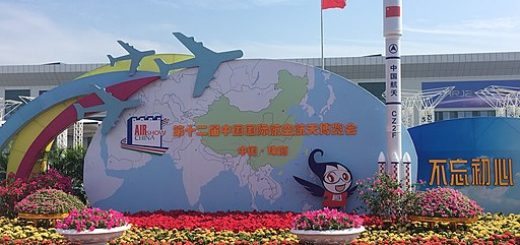Ryanair sees first half 2026 financial year profits increase by 42% to $2.92 billion
Ryanair Holdings, the parent company of the Ryanair group of airlines, has reported that its first-half results for the fiscal year 2025/26 (1H26) have risen significantly over the same period the previous year. Traffic also grew over the period, while network load factor remained steady at 95%. The Ryanair Group of airlines includes Ryanair, Ryanair UK, Malta Air, Buzz, and Lauda Europe.
On the financial front, H126 profits after tax rose by 42% to €2.54bn ($2.92bn) as traffic grew 3% to 119m passengers, up from 115.3 million in 1H25. Simultaneously reporting the results for the second quarter of 2025/25, profits at the airline group rose by 20%, reaching €1.72bn ($1.98bn), up 20% from €1.43bn ($1.64bn).
For the period, overall revenues rose by 13% to €9.82bn ($11.29bn) while revenue per passenger increased by 9%, with average fares rising by 13% and ancillary revenue up by 3%. Scheduled revenue increased 16% to €6.91bn ($7.95bn), which, according to the airline, was due to a strong easter 2025 period.
MC MEDIASTUDIO / ShutterstockOperating costs rose by 4% to €6.96bn, driven by higher air traffic control fees (up 14%) and environmental costs, but this figure was limited by the airline’s fuel hedging policy, said an airline statement. As of September 30, 2025, gross cash reached €3bn ($3.45bn). Net cash rose to over €1.5bn ($1.72bn) from €1.3bn ($1.49bn) as of March 31, 2025. The fleet figure stood at 636 aircraft as of the same date.
Speaking about the latest financial figures, Ryanair Group CEO Michael O’Leary commented, “This financial strength widens the cost gap between Ryanair and our competitors, many of whom remain exposed to expensive long-term finance and rising aircraft lease costs.
“In May 2025, we launched a €750m ($862.5m) share buyback. On September 30, 2025, we had purchased and cancelled over 7m shares (approx. 25% of programme) for €188m ($2.16.2m). Today, the Board (in line with Ryanair’s dividend policy) declared an interim dividend of €0.193 ($0.22) per share, which will be payable in late February 2026.”
An improved aircraft delivery outlook
“Ryanair benefited from Boeing’s improved delivery schedule throughout 2025, enabling our Group to carry extra passengers in 1h26 and selectively add capacity over the peak October mid-term school holidays and into the Christmas/New Year peak travel period,” said O’Leary. “Ryanair operated 204 Boeing 737-8200 “Gamechangers” in its 641-fleet at the end of October 2025, and we are confident that the last six remaining aircraft of an orderbook of 210 will be delivered well ahead of 2026, facilitating 4% traffic growth to 215m in 2026 (FY27).”
“Boeing expects MAX-10 certification in mid-2026, and they expect to meet our contract delivery dates for our first 15 MAX-10s in Spring 2027, with 300 of these fuel-efficient aircraft due to deliver by March 2034. As part of our preparations for the MAX-10s, we need to accelerate cadet and first officer (“FO”) recruitment for the next 3 years. While this investment in training and growth (approx. €25m per annum) will increase FO crewing ratios for up to 3 years, it will provide a strong pool of home-grown FOs ready for promotion to Captains when MAX-10 deliveries ramp up in the fiscal year 2029/30.”
Bradley Caslin / Shutterstock“We have also taken advantage of recent US$ weakness and hedged approximately. 35% of our MAX 10 firm order for 150 aircraft, an average €/$ rate of 1.24, locking in further capex savings on these low-cost aircraft.”
“For winter 2025/26, we have allocated Ryanair’s scarce capacity to those regions and airports actively cutting aviation taxes and incentivising traffic growth, such as Sweden, Slovakia, Italy, Albania, and Morocco by switching flights and routes away from high-cost, uncompetitive markets like Germany, Austria, and regional Spain.”
This trend will continue into 2026 with over 2,500 routes now on sale (including new bases in Tirana and Trapani, adding 91 additional routes). We expect European short-haul capacity to remain constrained to at least 2030 as the big two manufacturers remain behind on aircraft production. Pratt & Whitney engine repairs continue to be an issue for many Airbus operators, while EU airline consolidation accelerates (including Air Europa, SAS & TAP) and unprofitable airlines withdraw capacity from markets where they are unable to compete with Ryanair’s lower costs.”
“Industry capacity constraints, combined with our widening cost advantage, strong balance sheet, low-cost aircraft orderbook, and industry-leading operational resilience, will, we believe, facilitate Ryanair’s controlled profitable growth to 300 million passengers per year by fiscal year 2034.
RELATED
Five times daily – Emirates increases direct flights between Dubai and Cairo
The post Ryanair sees first half 2026 financial year profits increase by 42% to $2.92 billion appeared first on AeroTime.
Ryanair Holdings, the parent company of the Ryanair group of airlines, has reported that its first-half results for…
The post Ryanair sees first half 2026 financial year profits increase by 42% to $2.92 billion appeared first on AeroTime.





